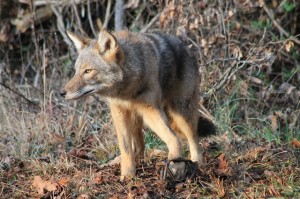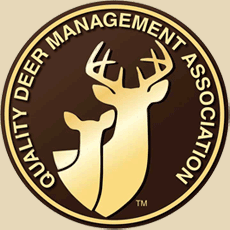In the past few years, a lot has been written about the influx of coyotes into the southeast. There is no doubt their numbers are increasing in every state of the south. While their impact on the deer population is still under investigation, most DNR biologists agree that they are imposing a significant negative impact on fawn survival.
Charles Ruth, Deer and Turkey project manager for the South Carolina Department of Natural Resources is conducting an intensive study on fawn mortality as attributed to coyotes. While his study is ongoing, and the data still not conclusive Ruth states that “there is no doubt the coyote has a significant negative impact on our deer herd.” Some preliminary studies indicate that of the fawn mortality, roughly 80% can be directly attributed to coyote depredation.
If this is the case as the data indicates, what is the land manager to do to help protect the deer on their property? The obvious answer is to remove coyotes from their land whenever possible. This can be done through a variety of methods. Shooting coyotes on sight is one good method. A lot of deer hunters in the Carolina’s and Georgia say that they see coyotes while deer hunting. Some will harvest them; others don’t for fear of ruining their deer hunt. On the piece of property I manage, we have a simple rule, if you see a coyote while deer hunting you must make an effort to remove that coyote. It’s not optional. Other land managers request the harvest of coyotes but it’s not mandatory. As a land owner or manager, it’s a good idea to put some type of policy in place when it comes to the incidental harvest of coyotes.
Jay Butfiloski, the fur bearer and alligator project manager for the South Carolina Department of Natural Resources says that there is no good way to quantify the actual coyote population in South Carolina. “We know we have them in every county, and we know we have at least 25,000 because that’s how many were harvested by deer hunters as indicated through our annual survey.” Butfiloski goes on to say that while we don’t know how many we have, “it’s a safe bet the coyote is here to stay.”
In addition to incidental removal by deer hunters, calling and hunting coyotes assists with their removal and provides other opportunities for hunters. In most states there is no season for coyotes on private land so a year around assault is possible. And while hunting coyotes and incidental harvest helps, as Charles Ruth says, ‘without question trapping is the most effective method of removing coyotes from your land.” Many land managers in Georgia, North Carolina and South Carolina are implementing an aggressive trapping program on their land to remove coyotes. This is done during the legal trapping seasons and with depredation permits at other times of year.
One of the best times to trap is just before and as the does are fawning. Contact your local DNR and get a depredation permit and start throwing steel in the ground. By this time of year, coyotes have already had their pups, they are at the point of being weaned and the does are fawning. It’s a smorgasbord for the coyotes. Food is abundant and easy to catch. This is also one of the best times to trap and to catch a lot of coyotes and remove them from your property.
If you don’t know how to trap, there are many trappers for hire that can come in and when done right, remove a lot of dogs from your land. A list of trappers can be found on the DNR websites and by contacting your state trappers associations.
One service I and other trappers offer is to come to your land and or club and conduct an instructional trapping program. The purpose is to trap and remove coyotes, while teaching the land owner or manager to trap so they can do it themselves in future years. The land owner and manager know their land like few others, they will be the best trappers on that land. By learning how to trap, you can have the greatest impact on your predators. Plus, trapping is a great art, and it will make you a better hunter. Luring an apex predator into a trap is a highly developed skill, learning how to effectively trap coyotes will not only remove them from the food chain and protect your deer, but it will make you a much better woodsman.
By focusing your efforts now, you will protect most of the fawns on your ground. To protect your fawns, we have to remove their predators. Fawns cannot grow into mature bucks if they don’t make it to adulthood. Every effort we can make to protect them will only enhance our deer herd, and improve our hunting.
The value of our hunting and recreational land is directly attributed to the amount of wildlife and the quality of wildlife on our land. We must do all we can to protect our herd. Planting food plots, controlled burns, fertilizing soft mast, all of these are important. Adding to your overall land management plan an effort to control predators will produce a healthier herd and a more balanced herd. This will increase the value of your land, and the enjoyment of your property will increase.





